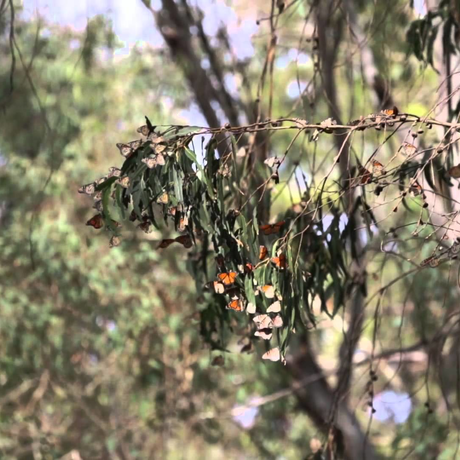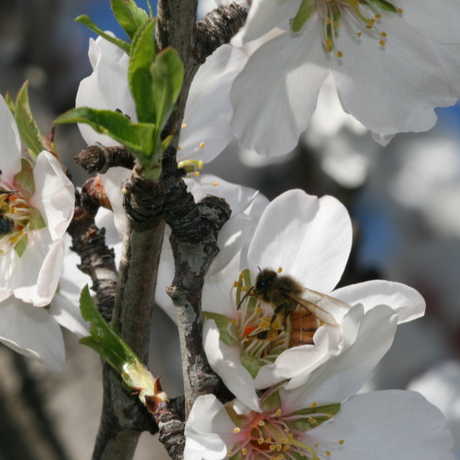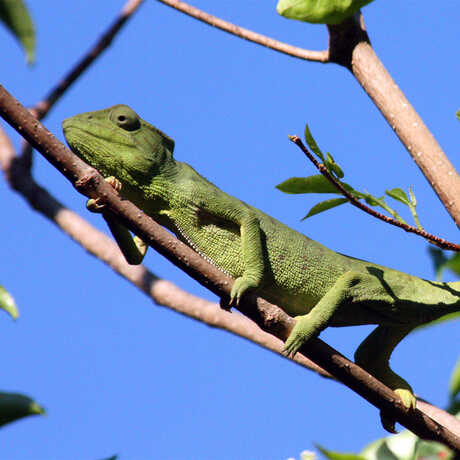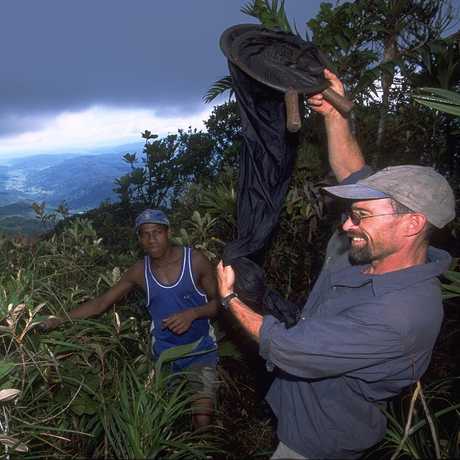Our Work
Darwin’s Hawkmoth
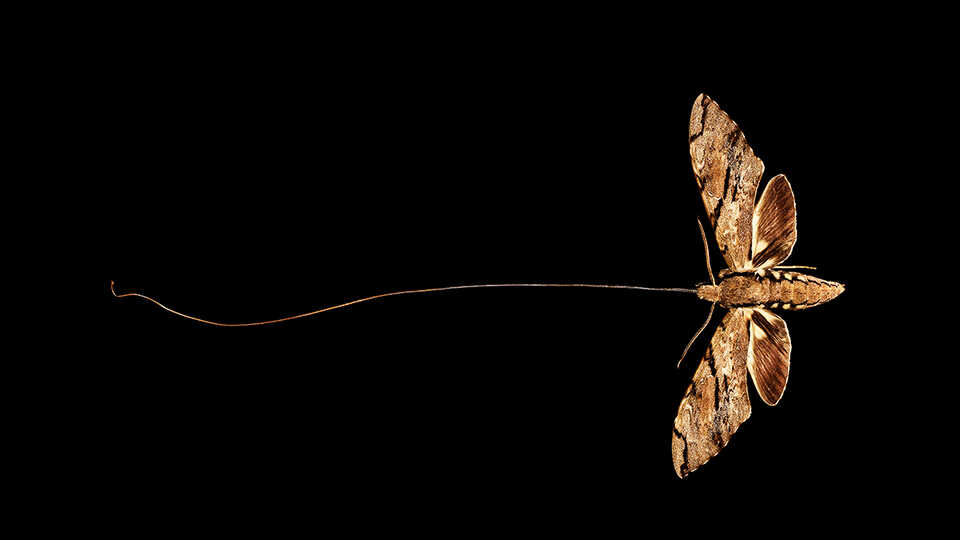
The giant hawkmoth, endemic to Madagascar, was discovered in 1882. Its existence, however, was predicted 20 years earlier—and nearly 5,700 miles away—by Charles Darwin, as he sat in his London office inspecting an unusual Star-of-Bethlehem orchid sent by a colleague. The specimen featured a foot-long nectar spur, with the nectar itself pooled only at the very bottom. “Good Heavens,” Darwin wrote in a letter to a friend, “what insect can suck it?”
Darwin declared that scientists would one day discover the orchid’s co-evolutionary partner: an insect with a foot-long proboscis. Two decades later, they did just that, documenting a subspecies of African hawkmoth that handily demonstrates Darwin’s theory of coevolution, by which the development of two species is driven or modified by the other.
The Academy’s first Darwin’s hawkmoth is mounted alongside a star orchid. “It enables us to discuss the coevolution of plants and their pollinators,” says Senior Entomology Collections Manager Norman Penny. “And it reminds people that we can’t make even selective cuts in a forest without breaking down the web of life that exists in that environment.”
Range
While there are many hundreds of species of hawkmoths found throughout the tropics, Darwin’s hawkmoth, with its 9- to 14-inch-long coiled proboscis, is found only in Madagascar.
Phylogeny
Xanthopan morgani belong to the family Sphingidae, a family of moths which, along with butterflies, make up the order Lepidoptera. Sphingidae are more commonly known as sphinx, hawk, or hummingbird moths for their unique flying abilities: more than other kinds of moths, Sphingidae can fly for sustained periods of time and flit from side to side while hovering, much like hummingbirds.
At the Academy
The Academy’s first Darwin hawkmoth was collected during a 1998 expedition to Madagascar, after Penny and four other entomologists set up a generator-powered mercury vapor light trap to attract insects at night. Credit for the catch goes to curatorial assistant Jere Schweikert; the specimen was pinned with its 9.5-inch-long proboscis fully extended.
The Academy holds one of the four largest entomology collections in North America, containing approximately 10 million curated specimens representing all orders, nearly all families, and approximately 250,000 species of insects, myriapods, and arachnids. Meet the researchers, explore projects and expeditions, and more.

